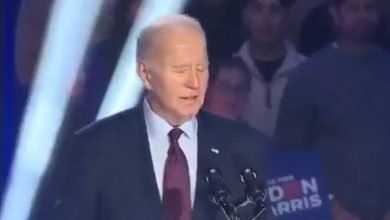Trump Tells Reporters On Christmas The Government Will Stay Shut Down Unless Wall Is Built

President Donald Trump said the federal government will remain shut down unless there is an agreement on some type of border wall or fence, when talking to reporters on Christmas day.
“I can’t tell you when the government is going to reopen…. [Not until] we have a wall, a fence, whatever they’d like to call it. I’ll call it whatever they want. But it’s all the same thing. It’s a barrier from people pouring into our country,” Trump said to reporters on Christmas after speaking with U.S. troops by phone from the White House.
Trump’s comments come as Senate Minority Leader Chuck Schumer said Republicans need to “abandon” border wall funding if they want the government to reopen, just less than 24 hours into the partial shutdown. Trump has clearly not budged on the issue, despite Schumer’s comments saying there must be a barrier if the government is going to reopen.
“It’s a barrier from drugs. There is a problem in this world today called human trafficking…We are not going to let that take place. We are working so hard to catch these traffickers. They are bad people. We can’t do it without a barrier, we can’t do it without a wall,” Trump continued.
Incoming White House Chief of Staff Mick Mulvaney warned that it is “very possible” the partial government shutdown will run into 2019, as Trump insists funding for the border wall must be included.
The two parties will now have to figure out an agreement, and the senators must be present for a vote on the Senate floor to send a bill to the president to sign and end the government shutdown.
Content created by The Daily Caller News Foundation is available without charge to any eligible news publisher that can provide a large audience. For licensing opportunities of our original content, please contact licensing@dailycallernewsfoundation.org




